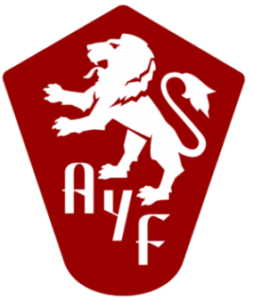The Dark Side of Your Sweet Treat

We have all seen innocent looking chocolate commercials with adorable kids laughing and having a good time while enjoying their chocolate bars. Some brands are represented by bunnies, some with oversized M&Ms, and some are so famous that they are known worldwide—brands such as Hershey, Mars and Nestle. Although they are competing brands they have a couple of things in common: they’re most definitely delicious, and they have one dark secret—CHILD LABOR.
To give a brief overview, chocolate is made from cocoa beans which come from the cacao tree; without these seeds chocolate as we know it would not exist. So, where do these companies get their cocoa beans from? The answer for the most part is Ivory Coast. This leads to the most important question: how does Ivory Coast collect its cocoa beans? Ivory Coast (or Cote d’Ivoire) has one of the largest child labor systems and largest cocoa bean farms; 43% of the world’s cocoa beans come from there.
 One would never guess the irony, and inhumanity, behind these companies. Their largest targets are kids, yet the ones doing the hardest manual labor are children as well.
One would never guess the irony, and inhumanity, behind these companies. Their largest targets are kids, yet the ones doing the hardest manual labor are children as well.
These children work in horrendous conditions providing the main ingredient of the chocolates that children around the world consume. They are under atrocious conditions and suffer from extreme abuse. From one end of the world to the other, the knowledge and whereabouts of where these products are derived from are ignored.
Children as young as the age of nine are trafficked into cocoa farms (with up to 15,000 children in each farm) and are forced to work there with very little pay or in most cases with no pay at all. So why do we continue to support them and buy their products?
The main way to fight back is to spread awareness and to boycott such companies that use child labor to get ahead. It will be hard to give up these chocolates, but the good news is that chocolates from stores such as Trader Joes, Whole Foods and some Target brands are free of child slave labor.
 The Ivory Coast is not the only source of cocoa seeds; however, it is the main one. The other sources are from Nigeria, Ghana and Cameroon and according to UNICEF these sources also have children who do the hard labor of picking the cocoa beans. Although most people assume that slavery no longer exists in the 21st century, numerous investigative reports suggest that the number of slaves at present is the highest it has ever been. UNICEF reports that nearly 700,000 women and children trafficked yearly.
The Ivory Coast is not the only source of cocoa seeds; however, it is the main one. The other sources are from Nigeria, Ghana and Cameroon and according to UNICEF these sources also have children who do the hard labor of picking the cocoa beans. Although most people assume that slavery no longer exists in the 21st century, numerous investigative reports suggest that the number of slaves at present is the highest it has ever been. UNICEF reports that nearly 700,000 women and children trafficked yearly.
Although these companies have been confronted about their questionable practices, they have not made the effort to change it—claiming that they do not own the farms and therefore do not deserve the blame or responsibility. What they do not comprehend is that they are the largest supporters of these farms, with the consumers of their chocolate second in line.
Most consumers do not know this dark side of these companies. As a result, it is up to those who are aware to do their task and take action by spreading the news.
_________
EDITOR’S NOTE: Nanor Aghamal is a senior at Hoover High School and is an AYF Nanor Krikorian Scholar. Her above article was selected as the winning submission in the 2009 Haytoug High School Essay Contest. This article is featured in the Summer 2009 issue of Haytoug, a quarterly publication by the Armenian Youth Federation. The upcoming issue will focus on the theme of solidarity between peoples and causes. Visit the AYF Booth at the Navasartian Games (July 2-5) to pick up a free copy. It will also be available at community centers, schools and local Armenian book stores. You can also download it in PDF today and visit the website to sign up for a free subscription.
More features from this Summer’s Haytoug:
- Kurds and Armenians: Finding Common Cause
- Another World is Possible: An Interview with Khatchik DerGhougassian
- Vahe Berberian: The Art and the Artist


Leave a Reply
Want to join the discussion?Feel free to contribute!